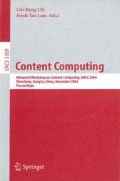Abstract
Security becomes increasingly important. However, existing security tools, almost all defensive, have many vulnerabilities which are hard to overcome because of the lack of information about hackers techniques or powerful tools to distinguish malicious traffic from the huge volume of production traffic. Although honeypots mainly aim at collecting information about hackers’ behaviors, they are not very effective in that honeypot implementers tend to block or limit hackers’ outbound connections to avoid harming non-honeypot systems, thus making honeypots easy to be fingerprinted. Additionally, the main concern is that if hackers were allowed outbound connections, they may attack the actual servers thus the honeypot could become a facilitator of the hacking crime. In this paper we present a new method to real-time emulate intrusion victims in a honeyfarm. When hackers request outbound connections, they are redirected to the intrusion victims which emulate the real targets. This method provides hackers with a less suspicious environment and reduces the risk of harming other systems.
Access this chapter
Tax calculation will be finalised at checkout
Purchases are for personal use only
Preview
Unable to display preview. Download preview PDF.
References
Spitzner, L.: Honeypots Definitions and Value of Honeypots, May 29 (2003), http://www.tracking-hackers.com/
Spitzner, L.: Honeypots: Tracking Hackers. Addison-Wesley, Boston (2002)
Spitzner, L.: Know Your Enemy: Sebek2 A kernel based data capture tool, September 13 (2003), http://www.honeynet.org/
Spitzner, L.: Hitting the Sweet Spot (July 2003)
Wessels, D.: Web Caching. The O’REILLY press, Sebastopol (November 2002)
Rabinovich, M., Spatscheck, O.: Web Caching and Replication, ch. 8. Addison Wesley, Reading (2002)
Davison, B.D., Rurgers: A Web Caching Primer. IEEE Internet Computing 5, 38–45 (2001)
Barish, G., Obraczka, K.: World Wide Web Caching: Trends and Techniques. IEEE Communications Magazine Internet Technology Series (May 2000)
Zeng, D., Wang, F.-Y., Liu, M.: Efficient Web Content Delivery Using Proxy Caching Techniques. IEEE Transactions on Systems, Man, and Cybernetics—Part C: Applications and Reviews 34(3) (August 2004)
Wang, J.: A Survey of Web Caching Schemes for the Internet. ACM Computer Communication Review 29(5), 36–46 (1999)
Malpani, R., Lorch, J., Berger, D.: Making World Wide Web Caching Servers Cooperate. In: Proceedings of the 4th International WWW Conference, Boston, MA (December 1995), http://www.w3.org/Conferences/WWW4/Papers/59/
Kroeger, T.M., Long, D.D.E., Mogul, J.C.: Exploring the Bounds of Web Latency Reduction from Caching and Prefetching. In: Proceedings of the Symposium on Internet Technologies and Systems (1997)
Author information
Authors and Affiliations
Editor information
Editors and Affiliations
Rights and permissions
Copyright information
© 2004 Springer-Verlag Berlin Heidelberg
About this paper
Cite this paper
He, XY., Lam, KY., Chung, SL., Chi, CH., Sun, JG. (2004). Real-Time Emulation of Intrusion Victim in HoneyFarm. In: Chi, CH., Lam, KY. (eds) Content Computing. AWCC 2004. Lecture Notes in Computer Science, vol 3309. Springer, Berlin, Heidelberg. https://doi.org/10.1007/978-3-540-30483-8_18
Download citation
DOI: https://doi.org/10.1007/978-3-540-30483-8_18
Publisher Name: Springer, Berlin, Heidelberg
Print ISBN: 978-3-540-23898-0
Online ISBN: 978-3-540-30483-8
eBook Packages: Springer Book Archive

